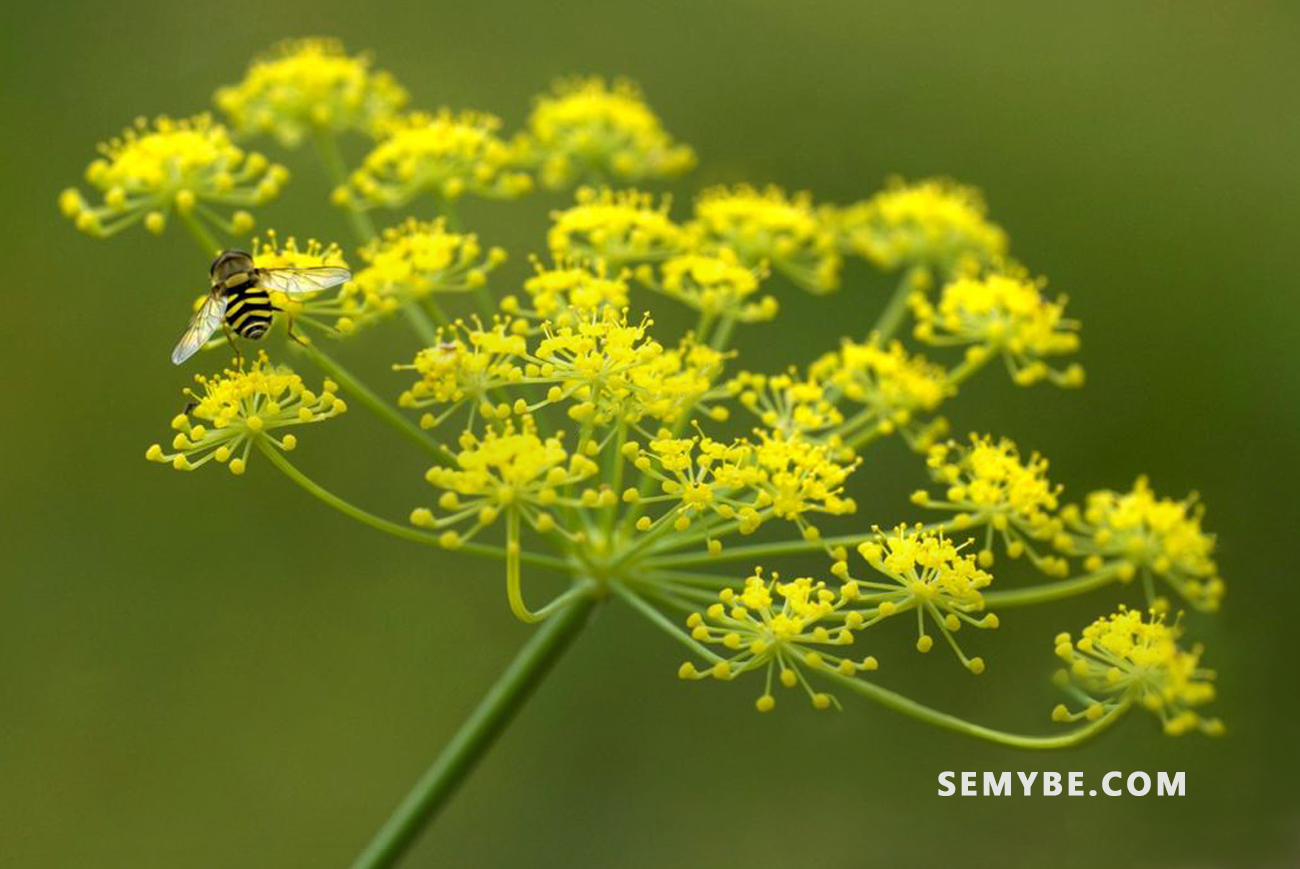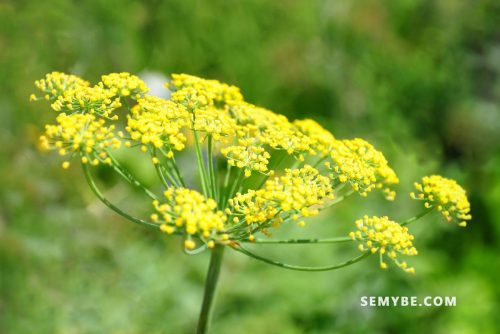
Foeniculum Vulgare
1. History and use
Fennel was already used in antiquity for its many medicinal properties, Hippocrates and Dioscorides prescribed it to women to promote lactation, but also to people who could lose their sight. In China and India, fennel was used In the Middle Ages, Italians cultivated it for its antiseptic and slimming properties, and was also known to be a spell herb able to keep demons away.
2. Description of the plant
Common fennel is a biennial or perennial plant that can grow up to 1.50 m, or even 2.50 m, with a light habit, slightly bluish leaves and large, smooth, sturdy stems fennel arranged in flat umbels. The petals have a rounded lobe, flowering takes place between August and September, the scent of flowers is strongly aniseed, two achenes make up the fruit, the roots are harvested in September, from the first. The leaves and stems are cut between are yellow, April and June, then dried and the seeds are picked as they mature. Fennel should not be confused with dill, which does not have edible swelling base.

3. Curative action
- Internal use
Antispasmodic: against spasms and pains in the stomach and colon.
Spasmolytic: stimulates digestion, limits the formation of intestinal gas Aperitif, digestive and carminative. Stimulating action, among others, on lactation Diuretic.
- Usual therapeutic indications
Clinical research has shown that fennel is effective in relieving infantile colic, and is widely used to treat digestive disorders such as dyspepsia, flatulence and lack of appetite, aerophagia and stimulate the colon muscles Diuretic, it increases urinary excretion, treats inflammation of the airways: expectorant pulmonary mucus, antitussive, cough and cold control, decreases menstrual pain, treats the absence of menstruation and hirsutism, stimulates lactation.
- Eye disorders:
Inflammation of the eyes and eyelids, blepharitis, conjunctivitis, swelling, irritation Fight against parasites of the body.
4. Uses
In infusion: to fight against infantile colic.For children over 3 months and a treatment less than a week.In infuse dried fruits. According to the following dosage:
- From 3 months to 1 year: from 1 to 2g of dried fruit a day,
- 1 to 4 years: 1.5 to 3 g of dried fruit a day.
- 4 to 12 years: 3 to 5 g of dried fruit a day
- After 12 years: of 5 to 7 g of dried fruit a day.
- For the infant’s stomach ache, the breastfeeding mother can consume infusions of fennel.
To fight against digestive disorders and inflammation of the respiratory tract: infuse, for 5 to 10 minutes, 1 to 3 g of dried and crushed seeds, in 150 ml of boiling water. Drink 2 or 3 a day between meals. To alleviate cups intestinal disorders, chew a teaspoon of fennel fruit, after the meal.
Essential oil: 0.1 to 0.6 ml per day, between meals To stimulate the appetite: from 0.1 to 0.6 ml in honey, 10 minutes before the two main meals. essential fennel promotes lactation.
In liquid extract (digestive disorders and inflammation of the respiratory tract): 1 to 3 ml (1/4 to 3/4 of a teaspoonful), 2 or 3 times a day, between meals.




